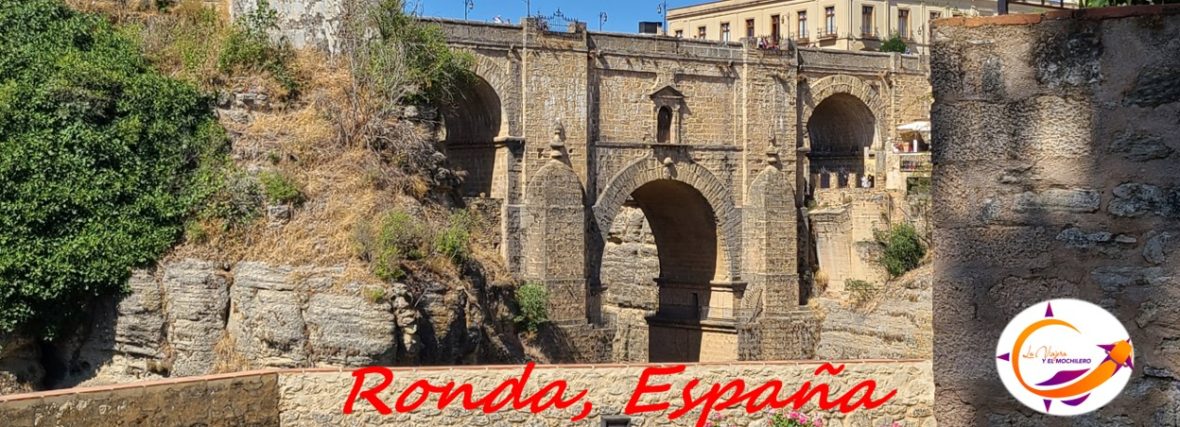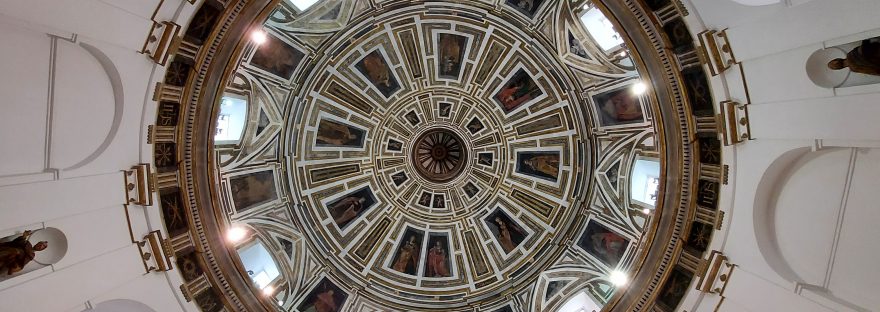On our way to visit the Carmen Thyssen Museum in Malaga (Spain), next to it, we found a church barely noticeable given its location on “Compañía” Street, which is very narrow and it becomes somewhat difficult to observe the facade, which, although it was a simple one, had some architectural details.
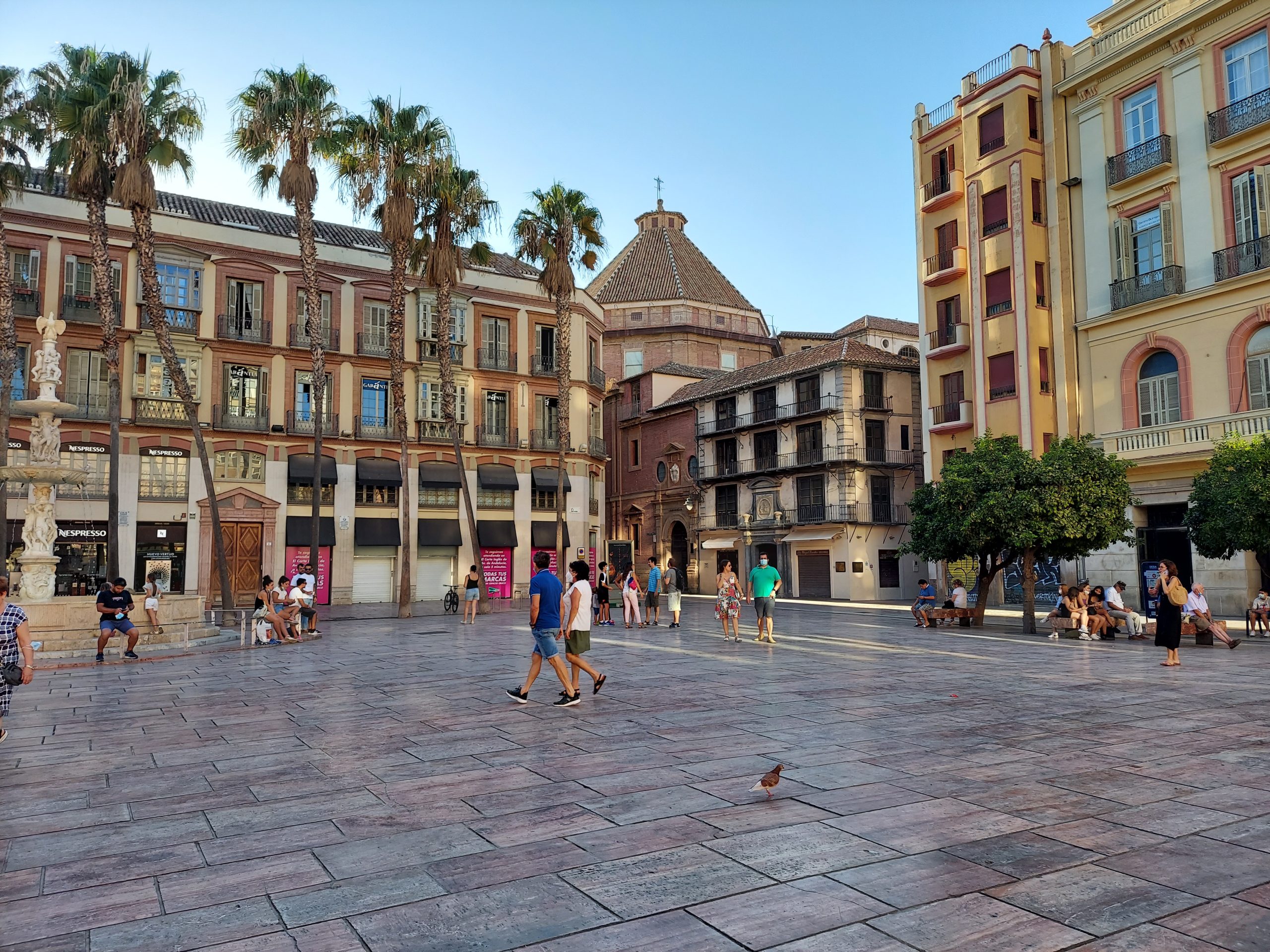
An open door invited us to enter to discover its interior. We were amazed at the beauty of the “Santo Cristo de la Salud” Church.
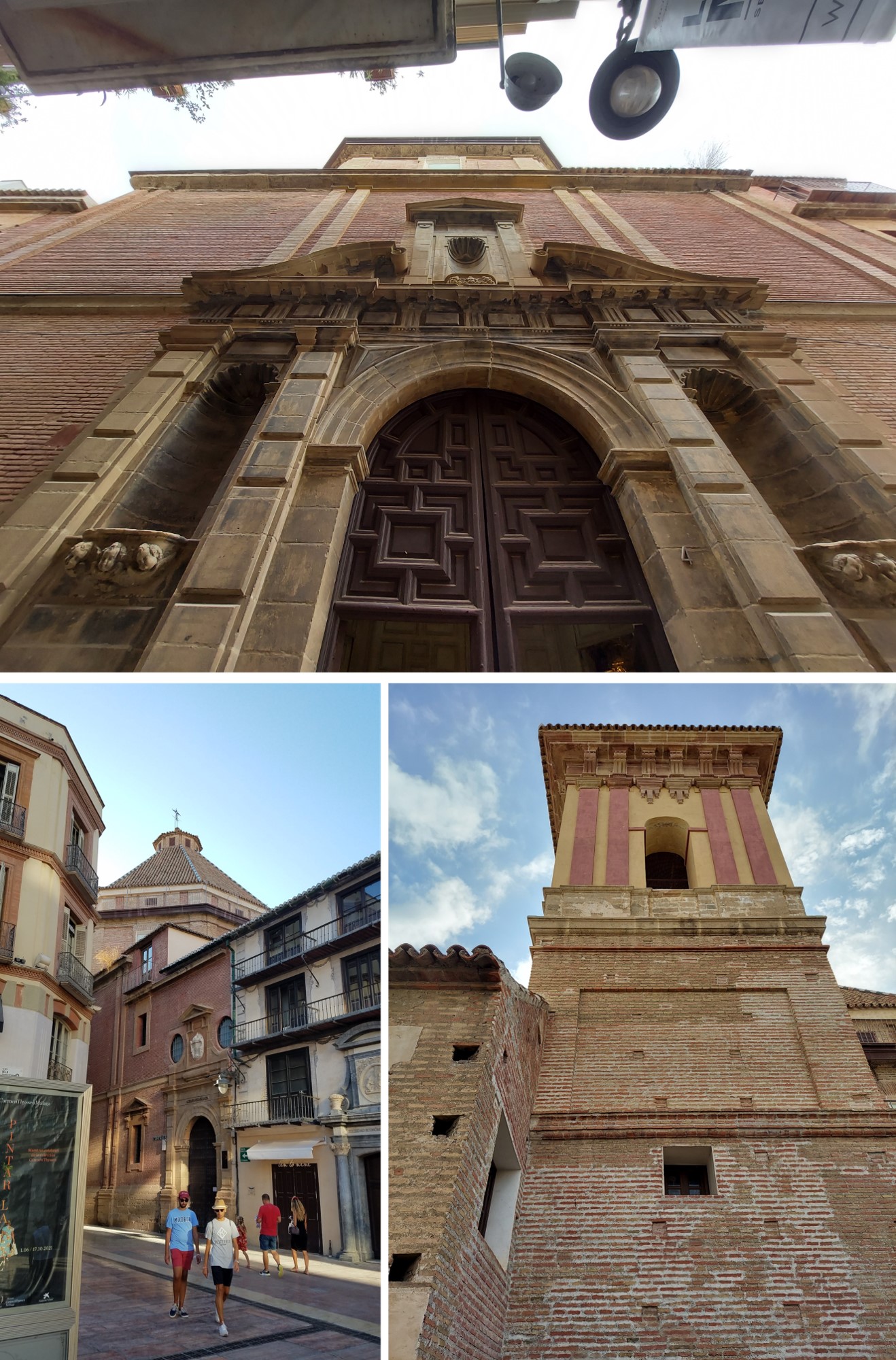
The building was built between the sixteenth and seventeenth centuries by the Society of Jesus, hence the name of the “Compañía” Street, where it is located. The Jesuits, a religious order founded by the Spaniard Saint Ignatius of Loyola in 1534, were already present in Malaga in the second half of the 16th century. In 1571 they were granted by the bishop D. Francisco Blanco de Salcedo a house located next to a hermitage consecrated to San Sebastian by the Catholic Monarchs and which had previously been a mosque. The small temple was not enough for them and in 1578 they requested the construction of a new church. In 1587 Villalpando drew up the plans for the college and the church following a Latin cross plan with three naves, in imitation of “Vignola’s Gesú” in Rome. However, when work began in 1598 under the direction of Brother Pedro Perez, he noticed several errors and made a new design approved by Rome in 1604, this time in the Baroque style and with an octagonal plan. The works began in 1626, being inaugurated in 1630, continuing its construction until 1644.
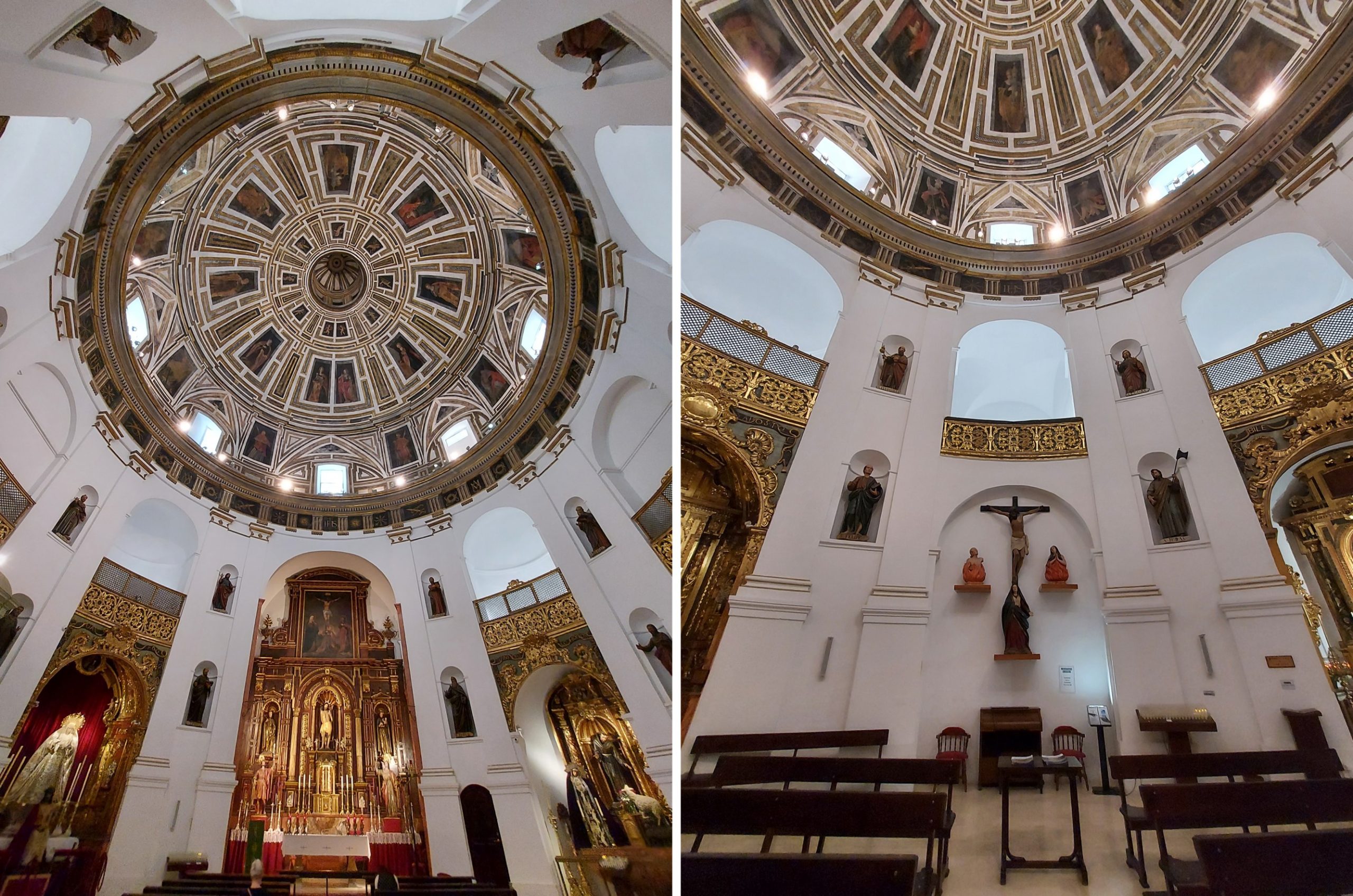
After the disentailment or liberation and sale of the goods belonging to the church, and the expulsion of the Jesuits in 1767, the “Santo Cristo de la Salud” Church passed through the hands of various entities. By the middle of the XIX century, the Patronage of the Santo Cristo de la Salud was created and a carved work of Jesus tied to the column of 1633, was placed in the space previously occupied by the image of Saint Peter. The carving is attributed the miraculous healing that took place in the city in 1649 when it appeared during an epidemic.
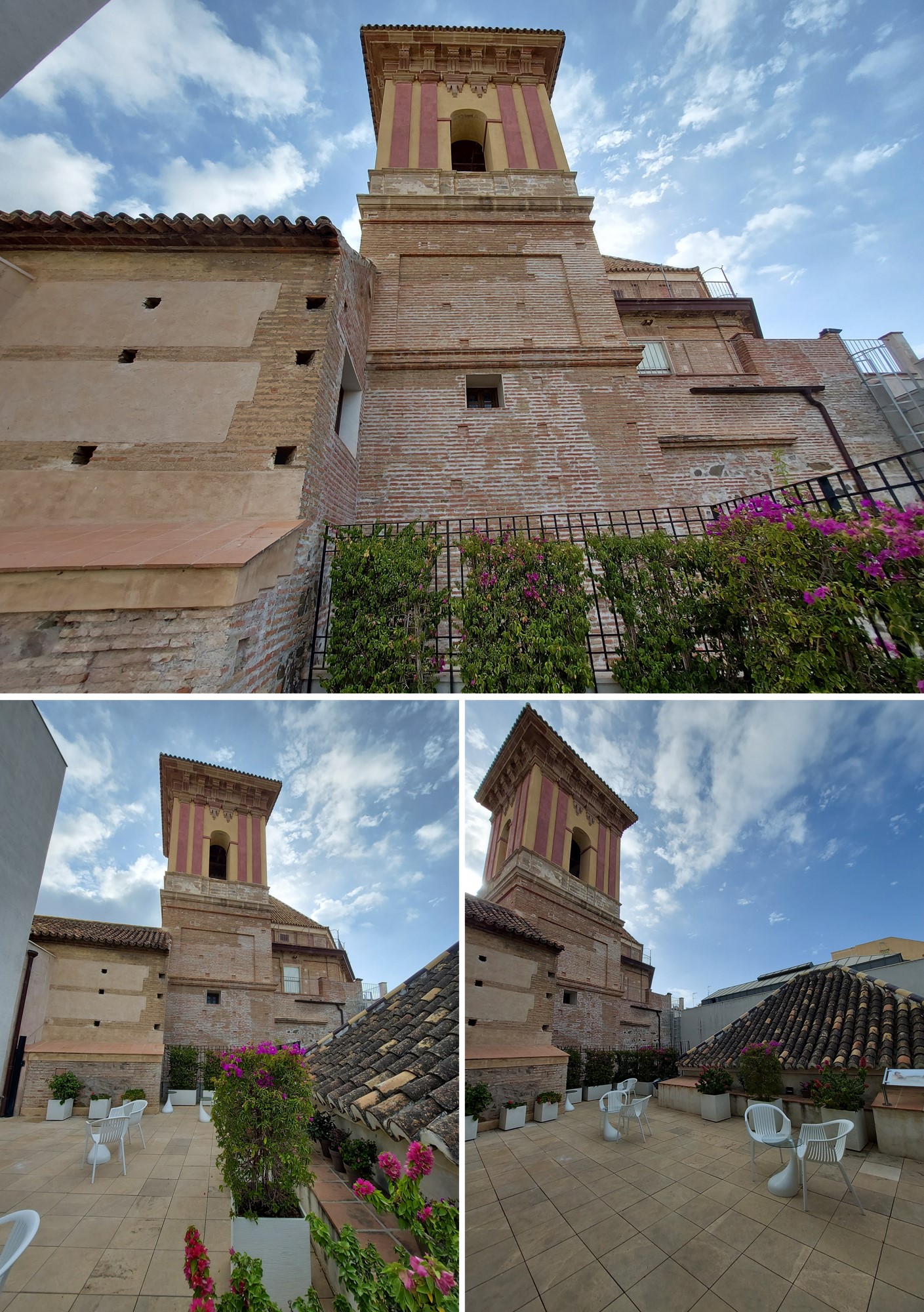
Annex to the dome of the “Santo Cristo de la Salud” Church, there is a quadrangular bell tower of three bodies with walls of Mudejar construction. In one of the upper terraces of the Carmen Thyssen Museum, this bell tower can be seen in detail.
The “Santo Cristo de la Salud” Church is a very interesting and novel example of circular construction, which breaks with the scheme of other temples of the regular clergy in Malaga at the time, and even those of the Society of Jesus itself. This church is configured as one of the most important cultural references of this city. In fact, the most impressive feature of the Church is its dome, which is known as a hemispherical dome; a marvel. Additionally, the areas of chapels are treated as niches.
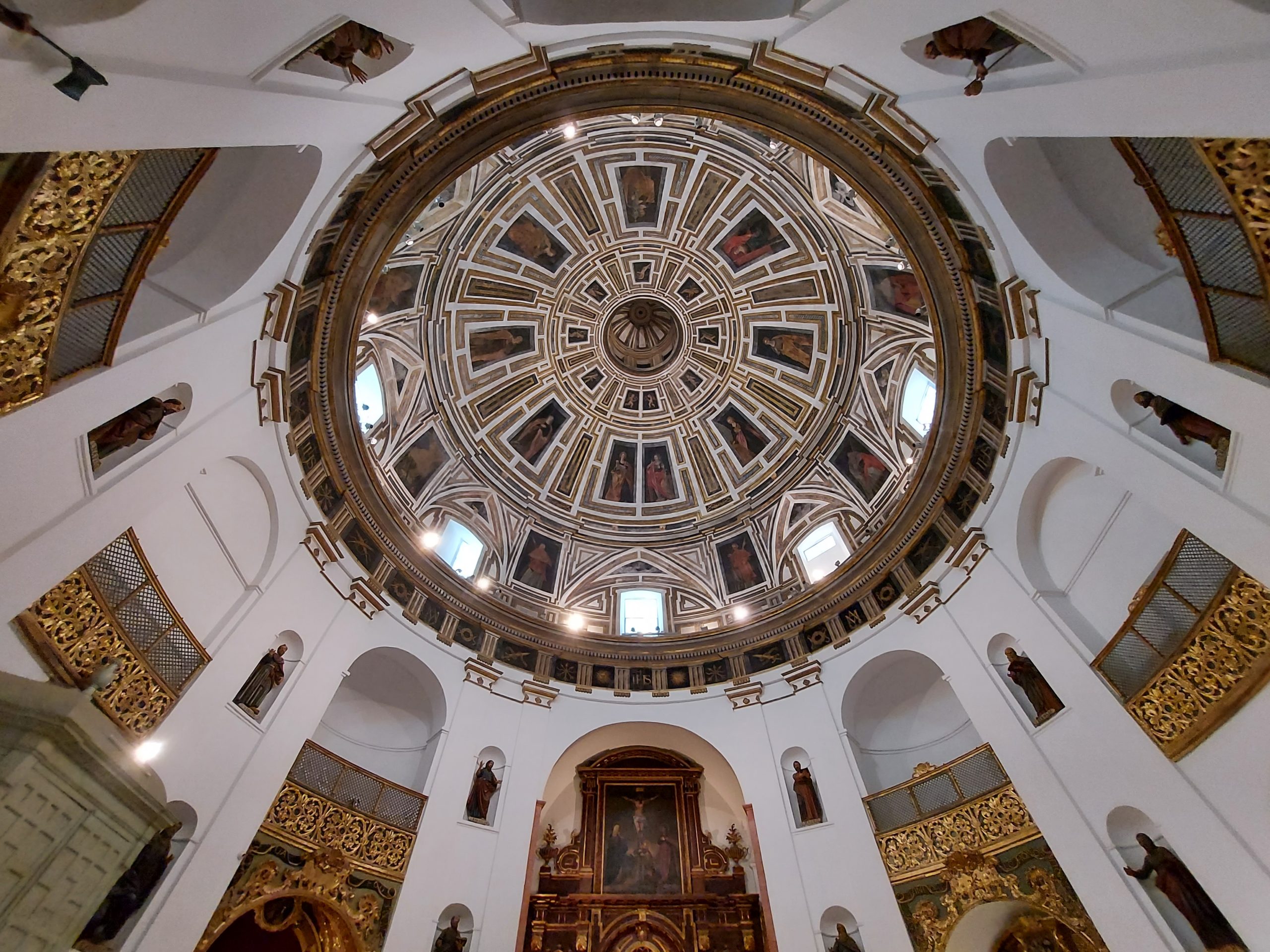
The interior of the dome is painted in three concentric parts that give it a great beauty and a perfect geometric organization. In each of the three parts, there are mural paintings of mannerist influence, where the “trompe l’oeil” or fake architecture is integrated with the building and adapts to the curvature of the dome.
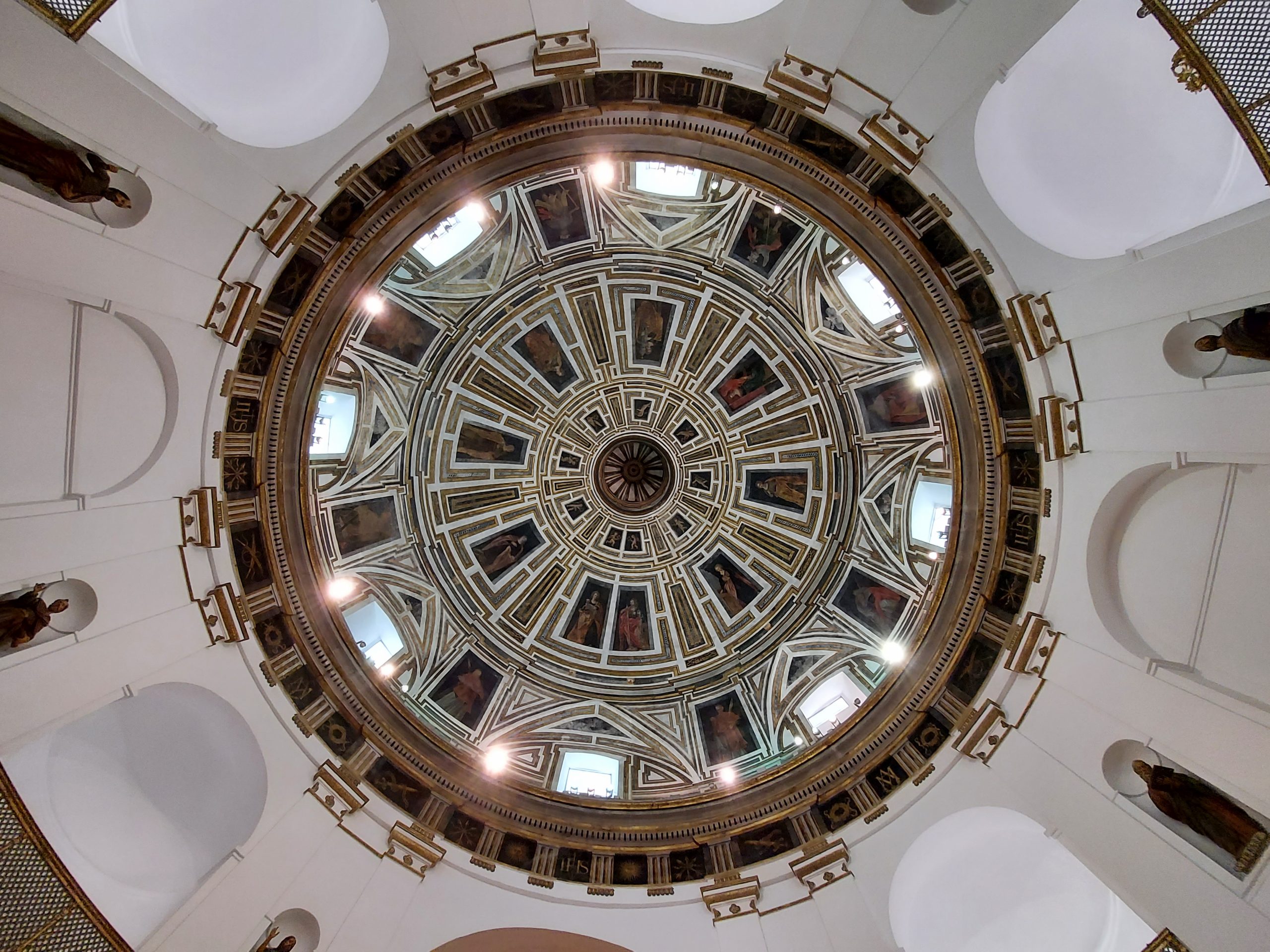
Between 1639 and 1643, Brother Andrés Cortés carried out the paintings that are distributed in the three rings of the dome. In these are represented saints and saints martyrs of the primitive Roman Church, little angels carrying symbols of martyrdom and allegories of the martyrdom of Saint Sebastian. Each painting is framed by means of trapezoid-shaped casetones, achieving a great luminous effect and highlighting its coloring. It is said that this extensive iconographic program is considered the most important in Andalusia. In fact, the interior of the dome is really a pedagogical space, with the theme of martyrdom as its axis, which goes hand in hand with Jesuit doctrine.
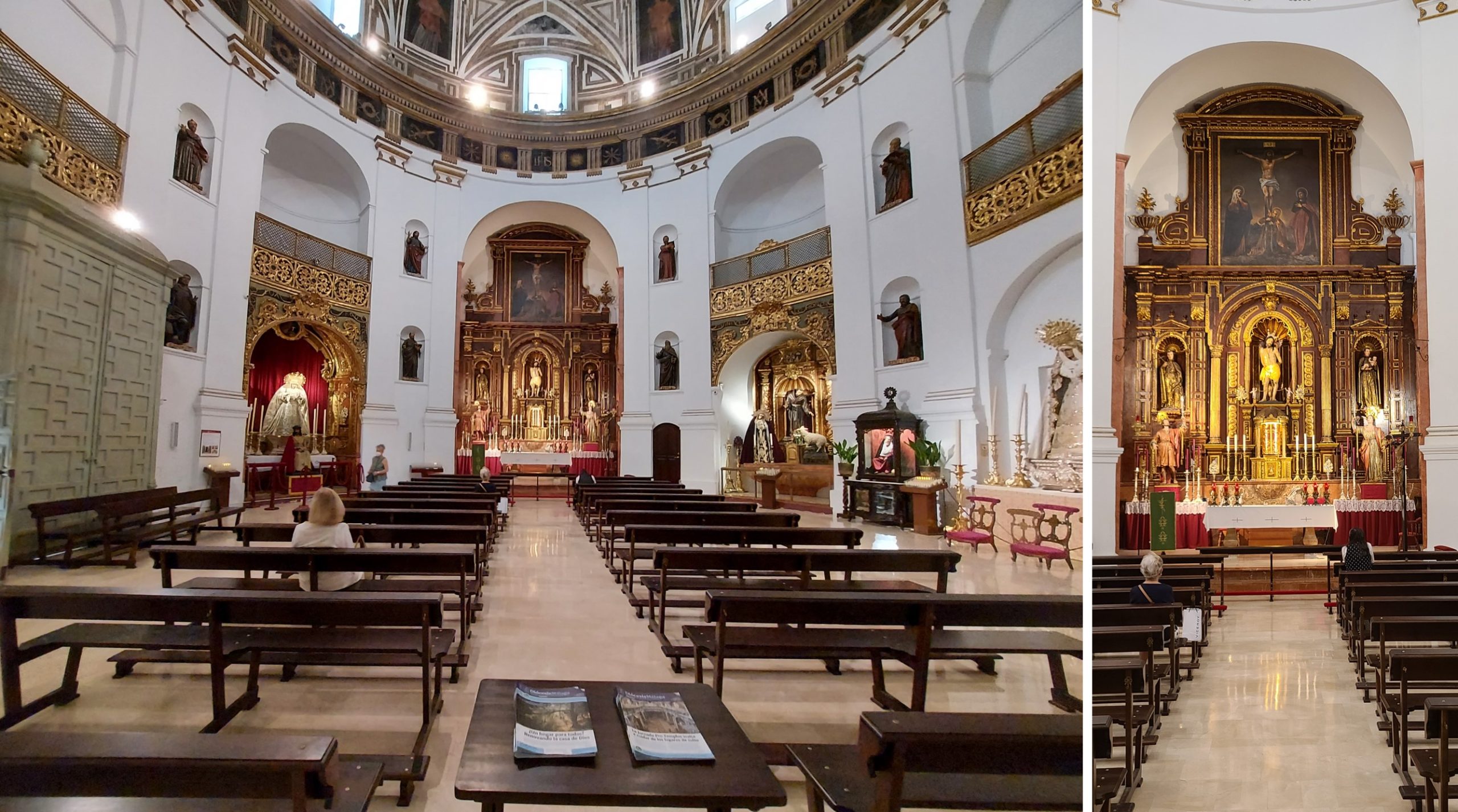
The altarpiece of the High Altar together with the tabernacle of the “Santo Cristo de la Salud” Church was carved in 1633 by the Jesuits Ángel Cortés and Díaz de Ribero. The large niche that houses the High Altar is part of reform works carried out in 1787, giving the interior a greater visual directionality towards the High Altar, than it had until then. In the center of the main altarpiece is the image of San Sebastian, patron saint of the church.
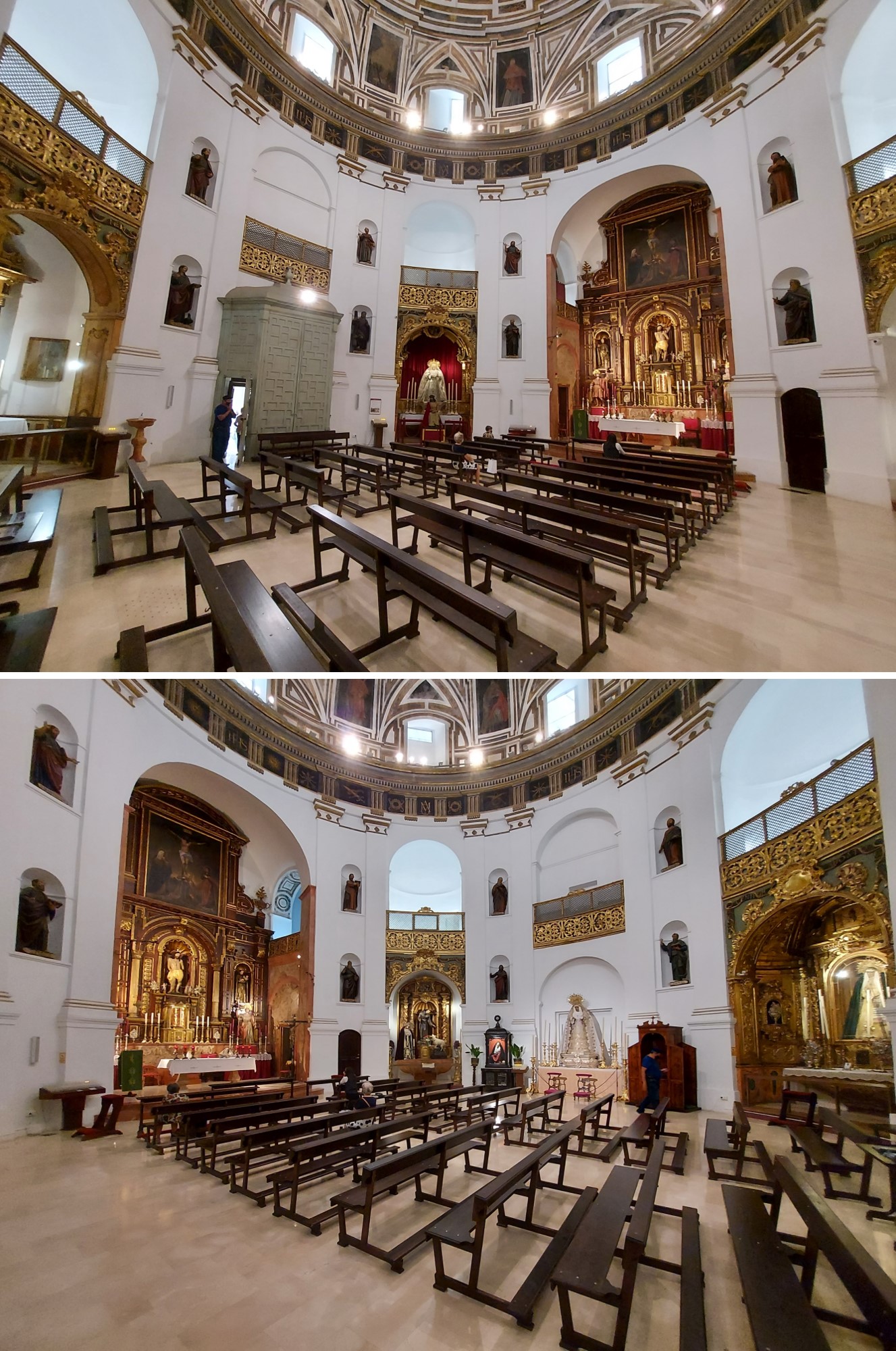
The four chapels of the “Santo Cristo de la Salud” Church in Malaga were consecrated to saints of the order: St. Ignatius of Loyola, St. Francis Xavier, St. Francis Borgia and the Holy Martyrs of Japan.
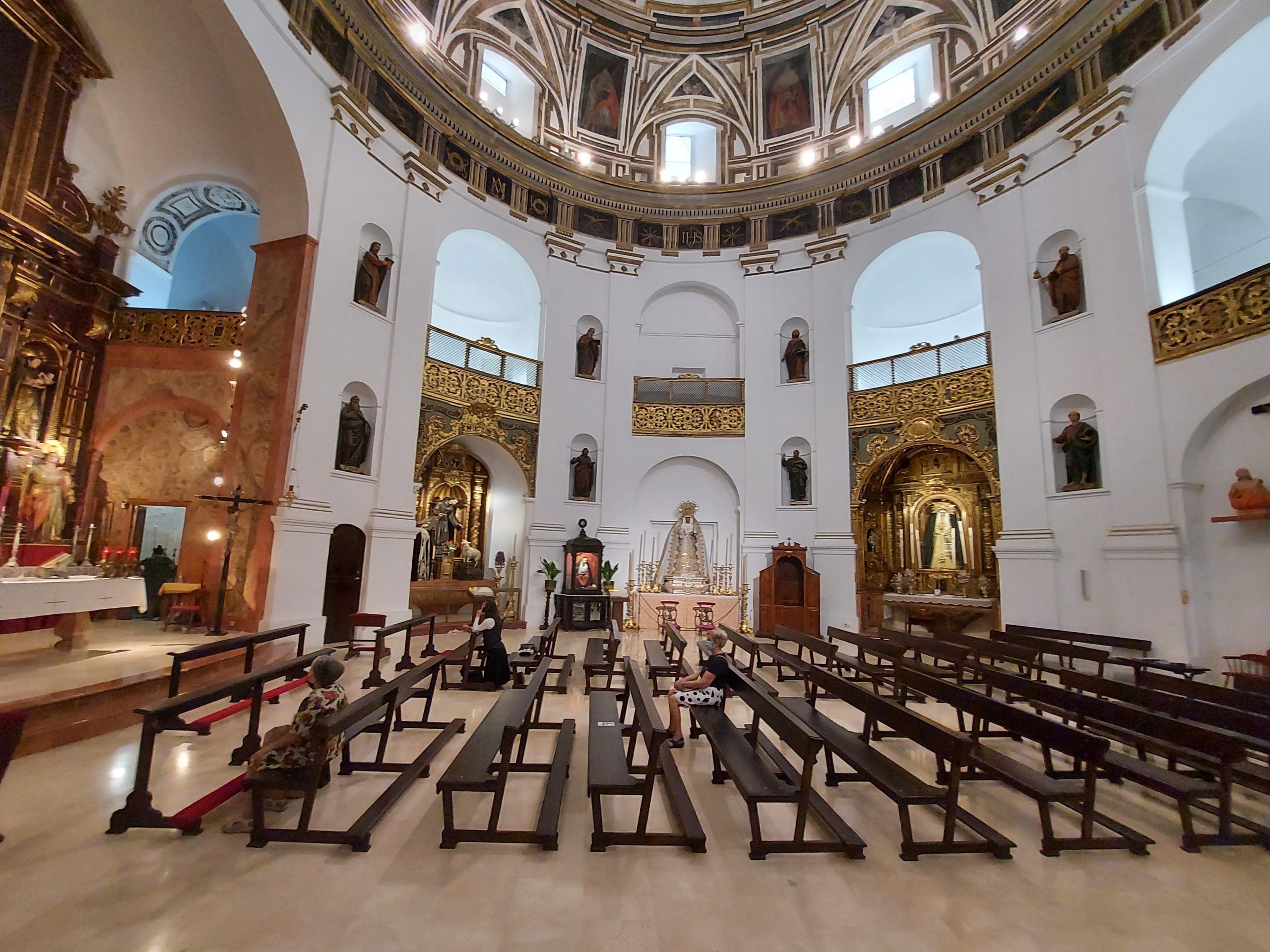
Also important are the paintings of the altars and sculptures, two of them corresponding to the Christ Crowned with Thorns and the Virgin of Grace and Hope, which are the ones that on Easter Monday, are paraded through the streets of Malaga, by the Brotherhood of the Students. In 2015, the “Santo Cristo de la Salud” Church was declared an Asset of Cultural Interest within the typology of Monument, along with the other buildings that make up the Old Jesuit College of San Sebastian.
***************
Sources consulted:
https://es.m.wikipedia.org/wiki/Iglesia_del_Santo_Cristo_de_la_Salud_(M%C3%A1laga)
https://www.malaga.es/es/turismo/patrimonio/lis_cd-3820/iglesia-del-santo-cristo-de-la-salud
https://visita.malaga.eu/es/que-ver-y-hacer/visitas/monumentos-historicos/monumentos/iglesia-del-santo-cristo-de-la-salud-p10
http://www2.ual.es/ideimand/iglesia-del-santo-cristo-de-la-salud-malaga-s-xvii/
https://www.viajerosencortomalaga.com/067005020c94t08.html
